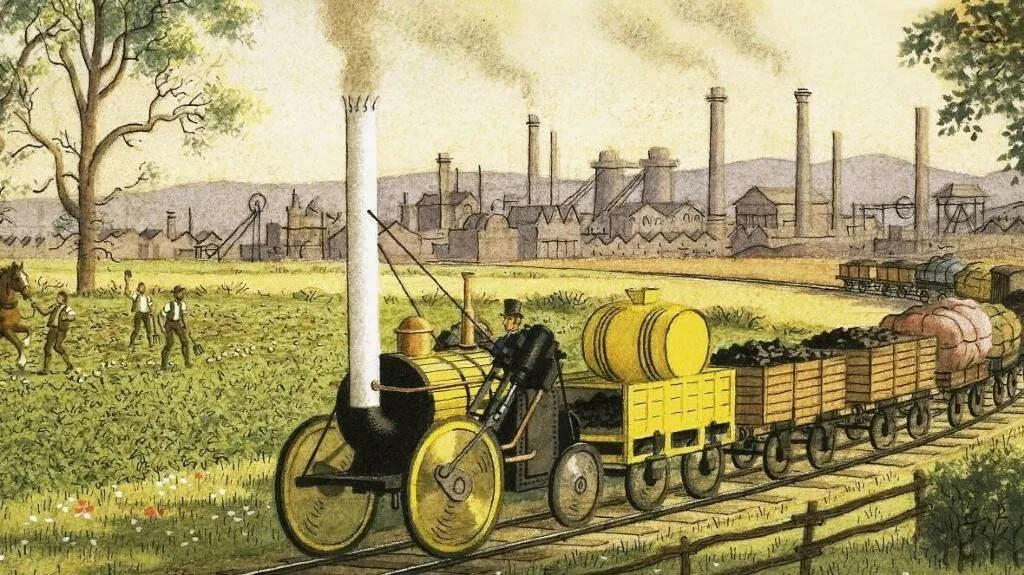
The Industrial Revolution wasn’t just a moment in history—it was a radical transformation that reshaped every corner of the globe. Beginning in Britain in the late 1700s and spreading across Europe, North America, and eventually the world, it changed how we live, work, and even think. It was more than a shift in industry; it was a revolution in society itself.
How the Industrial Revolution Changed the World?
The Industrial Revolution is one of the most transformative periods in human history. Spanning from the late 18th century to the early 20th century, it marked a major turning point that changed the way people lived, worked, and interacted with their environment. What started in Great Britain eventually swept across Europe, North America, and beyond, leaving a permanent mark on global society. But what exactly changed—and why does it still matter today?

1. From Hand to Machine: The Birth of Modern Industry
Before the Industrial Revolution, most goods were produced by hand in small workshops or homes. The introduction of machines—like the spinning jenny, steam engine, and power loom—revolutionized manufacturing. Factories began to replace traditional crafts, making production faster, cheaper, and more efficient.
This shift from manual labor to mechanized production laid the foundation for the modern industrial economy. Entire industries, especially textiles, steel, and coal, expanded rapidly.
2. Urbanization and the Rise of Cities
With factories came jobs—and with jobs came people. Rural populations began migrating to cities in search of work, leading to rapid urbanization. Small towns grew into bustling industrial centers like Manchester, Chicago, and Berlin.
This migration created both opportunity and challenge: new infrastructure, housing, and transportation systems had to be built, while overcrowding, pollution, and poor working conditions became serious issues.
3. Transportation and Communication Booms
The Industrial Revolution transformed how people moved and communicated:
Railways expanded across continents, making travel faster and trade more efficient.
Steamships shortened sea voyages and connected distant parts of the world.
Telegraphs enabled near-instant communication over long distances—an unthinkable feat just decades before.
These changes shrank the world in practical terms, paving the way for globalization and international trade.
4. Economic and Social Shifts
The old agrarian economies gave way to capitalist industrial economies. Wealth was no longer tied to land ownership alone but increasingly to manufacturing, finance, and innovation.
However, this shift also created stark class divisions:
A new industrial middle class emerged—entrepreneurs, inventors, and business owners.
At the same time, a growing working class toiled long hours under often harsh conditions.
These social changes sparked labor movements, new political ideologies (like socialism and communism), and calls for reform and workers’ rights.
5. Scientific Advancements and Innovation
The Industrial Revolution was closely tied to a surge in scientific knowledge and technological innovation. Inventions like the electric light, internal combustion engine, and eventually the telephone and radio set the stage for future revolutions in science and technology.
This spirit of innovation continues today, rooted in the same principles of experimentation, efficiency, and mass production.
6. Global Impact and Colonization
As industrialized nations grew richer and more powerful, they looked outward for raw materials and markets. This fueled the age of imperialism, where European powers colonized large parts of Africa, Asia, and the Americas—often with devastating consequences for local populations and cultures.
Thus, the Industrial Revolution played a key role in reshaping the global power structure and the modern geopolitical map.
Final Thoughts: A Mixed Legacy
The Industrial Revolution brought about incredible progress—economic growth, technological breakthroughs, and improved living standards for many. It laid the groundwork for the modern world we live in today.
Yet, it also introduced serious challenges: environmental degradation, exploitative labor systems, and deep social inequalities. Its legacy is a complex one—a reminder that progress must be guided by ethics, sustainability, and a concern for the human condition.
As we navigate our own era of technological transformation, understanding the Industrial Revolution helps us ask the right questions: What kind of future are we building—and for whom?